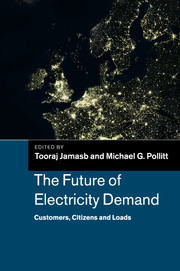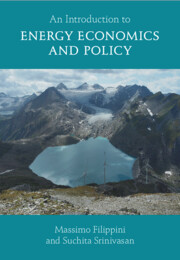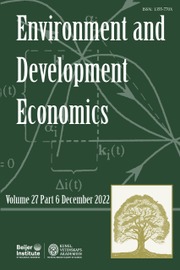The Future of Electricity Demand
What will electricity and heat demand look like in a low-carbon world? Ambitious environmental targets will modify the shape of the electricity sector in the twenty-first century. 'Smart' technologies and demand-side management will be some of the key features of the future of electricity systems in a low-carbon world. Meanwhile, the social and behavioural dimensions will complement and interact with new technologies and policies. Electricity demand in the future will increasingly be tied up with the demand for heat and for transport. The Future of Electricity Demand looks into the features of the future electricity demand in light of the challenges posed by climate change. Written by a team of leading academics and industry experts, the book investigates the economics, technology, social aspects, and policies and regulations which are likely to characterize energy demand in a low-carbon world. It provides a comprehensive and analytical perspective on the future of electricity demand.
- Proposes an innovative and policy-oriented view on the future of electricity and heat in a low-carbon world
- Provides a multi-dimensional analysis of electricity and heat demand, drawn from the perspectives of economics, technologies and buildings, society and behaviour, and policy and regulation
- Includes empirical case studies to help readers understand trends, technologies, implemented policies and their impact, both for the UK and the rest of the world
Product details
July 2015Paperback
9781107532731
508 pages
228 × 153 × 26 mm
0.75kg
98 b/w illus. 56 tables
Available
Table of Contents
- List of figures
- List of tables
- List of boxes
- List of contributors
- Foreword
- Preface
- Acknowledgments
- Introduction and overview of the chapters Tooraj Jamasb, Laura M. Platchkov and Michael G. Pollitt
- Part I. The Economics:
- 1. The economics of energy (and electricity) demand Laura M. Platchkov and Michael G. Pollitt
- 2. Energy scenarios and implications for future electricity demand Graham Ault, Damien Frame and Nick Hughes
- 3. Demand side participation: price constraints, technical limits and behavioural risks Jacopo Torriti, Matthew Leach and Patrick Devine-Wright
- 4. Review of recent developments in economic modelling of energy demand Jevgenijs Steinbucks
- Part II. Technology:
- 5. Demand-side management and control in buildings Joe A. Clarke, Jun Hong, Cameron M. Johnstone, Jae Min Kim and Paul Tuohy
- 6. Smart metering: technology, economics and international experience Aoife Brophy Haney, Tooraj Jamasb and Michael G. Pollitt
- 7. Smart domestic appliances as enabling technology for demand-side integration: modelling, value and drivers Vera Silva, Vladimir Stanojevic, Marko Aunedi, Danny Pudjianto and Goran Strbac
- 8. The scope for and potential impacts of the adoption of electric vehicles in UK surface transport Gregory Marsden and Stephane Hess
- Part III. Social Dimensions:
- 9. From citizen to consumer: energy policy and public attitudes in the UK Elcin Akcura, Aoife Brophy Haney, Tooraj Jamasb and David M. Reiner
- 10. The local dimension of energy Scott Kelly
- 11. Centralisation, decentralisation and the scales in between: what role might they play in the UK energy system? Jim Watson and Patrick Devine-Wright
- 12. Equity, fuel poverty and demand (maintaining affordability with sustainability and security of supply) Catherine Waddams Price
- 13. Energy spending and vulnerable households Tooraj Jamasb and Helena Meier
- Part IV. Policy and Regulation:
- 14. Demand-side management strategies and the residential sector: lessons from the international experience Aoife Brophy Haney, Tooraj Jamasb, Laura M. Platchkov and Michael G. Pollitt
- 15. Electricity distribution networks: investment and regulation, and uncertain demand Tooraj Jamasb and Cristiano Marantes
- 16. The potential impact of policy and legislation on the energy demands of UK buildings and implications for the electrical network Joe A. Clarke, Jun Hong, Cameron M. Johnstone, Jae Min Kim and Paul G. Tuohy
- 17. The ADDRESS European project: a large-scale R and D initiative for the development of active demand François Bouffard, Régine Belhomme, Alioune Diop, Maria Sebastian-Viana, Cherry Yuen, Hannah Devine-Wright, Pedro Linares, Ramón Cerero Real De Asua and Giovanni Valtorta
- 18. Daylight saving, electricity demand and emissions: the British case Yu-Foong Chong, Elizabeth Garnsey, Simon Hill and Frédéric Desobry
- 19. Concluding reflections on future active networks and demand side Tooraj Jamasb and Michael G. Pollitt
- Index.






